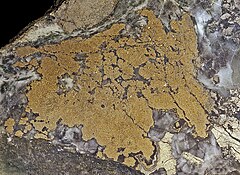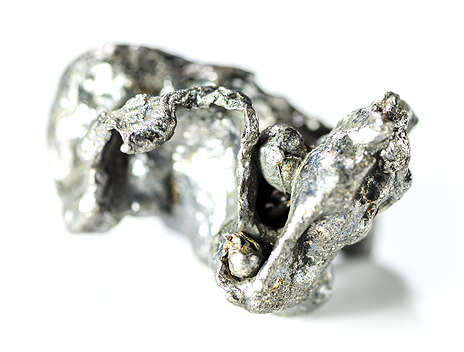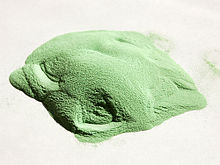Table of Contents
To test the presence of nickel in a mineral, by means of the blowpipe, requires great care. If heated on charcoal, together with carbonate of soda in the inner flame, a grey metallic powder, attractable by the magnet, is formed. If heated with borax on platinum wire in the outer frame, a hyacinth red to violet brown glass results when hot, a yellowish or yellowish red when cold. In the reducing flame a grey bead is formed.
Kupfernickel (Arsenical nickel)
- Generally massive, kidney-shaped, columnar, arborescent, & c.
- Crystallization—hexagonal.
- Colour—copper red (greyish or blackish when tarnished).
- Streak—paler.
- Lustra—metallic.
- Structure—brittle.
- H.—5 to 5·5 ; S.G.— 7·3 to 7·7.
- Composition—35 to 45 per cent, of nickel, the rest chiefly arsenic.
Often resembles native copper, but is harder. Soluble in aqua regia, and forms a green solution which becomes a violet blue by the addition of ammonia.
White Nickel (nickel glance)
- Crystallization—cubical.
- Colour—silver white or steel grey.
- Streak—greyish black.
- Lustre—metallic.
- Structure—brittle.
- H.—5·5 to 6 ; S.G.—6·4 to 6·7.
- Composition—25 to 30 per cent, nickel, the rest arsenic Soluble in aqua regia.
Emerald Nickel (a carbonate of nickel)
Is of a bright green colour, and contains 28·6 per cent, of water.
In addition to the above may be mentioned the prolific hydrated silicate of nickel found in New Caledonia.
- Colour—green, light or dark.

- Streak—light green.
- S.G.—2·2 to 2·86 ; H.—2·5.
Gives off water when heated. Fuses in borax before B.F., and gives the ordinary nickel bead. Is a silicate of nickel and magnesia, with iron. Good specimens yield 12 per cent, nickel. Is found in lodes and pockets in serpentine rock. Matrix, cellular silica. Sometimes in a lode, the nickel is replaced by cobalt. Sometimes associated with chrome iron.
Excepting the New Caledonia ore, the principal ore is kupfernickel. It occurs in many countries of Europe, in metamorphic, syenitic rocks, &c., and is generally associated with ores of cobalt, copper, silver, lead, &c. In Canada, a deposit of nickel ore occurs between magnesian limestone above and serpentine below.
On the surface of a nickel-bearing lode, some green stains may be noticed. A serpentine country is always worth prospecting for nickel, cobalt, and chromium minerals.
